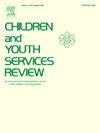年轻人寻求帮助意愿的预测因素:基于常识模型的研究
IF 1.7
2区 社会学
Q1 FAMILY STUDIES
引用次数: 0
摘要
背景心理健康问题在年轻人中普遍存在,但寻求帮助的人数仍然很少。广泛应用于身体健康的常识模型可能有助于解释年轻人对心理健康挑战的看法以及他们寻求帮助的意图。目的探讨疾病知觉和性别在心理压力严重程度与求助意向的关系中的作用。具体来说,它研究了疾病感知是否介导了这种关系,以及性别是否直接或通过介导的途径(如果有的话)调节了这些影响。方法爱尔兰共有280名年轻人参与了这项研究。本研究采用中介与调节分析的方法,评估心理压力严重程度通过疾病知觉对求助意向的间接影响,以及性别的调节作用。结果后果和治疗两个疾病知觉维度在痛苦严重程度-求助关系中起完全调节作用。性别对直接或间接途径都没有影响。在中介模型中,自我羞耻感与求助意向显著负相关。研究结果表明,心理健康干预可能受益于包括关于未经治疗的心理健康困难的负面后果的信息和强调治疗效果,而污名化干预对促进寻求帮助的意愿至关重要。本文章由计算机程序翻译,如有差异,请以英文原文为准。
Predictors of help-seeking intention among young people: a Common-Sense Model based study
Background
Mental health difficulties are prevalent among young people yet help-seeking remains low. The Common-Sense Model, widely applied in physical health, may help explain young people’s perceptions of mental health challenges and their intentions to seek help.
Objectives
This study explored the role of illness perceptions and gender in the relationship between distress severity and help-seeking intentions. Specifically, it examined whether illness perceptions mediate this relationship and whether gender moderates these effects, either directly or via the mediated pathways, if any.
Method
A total of 280 young people in Ireland participated in the study. Mediation and moderation analyses were conducted to assess the indirect effect of distress severity on help-seeking intentions through illness perceptions and the moderating effect of gender.
Results
Two illness perception dimensions—consequence and treatment control—fully mediated the distress severity—help-seeking relationship. Gender did not moderate either the direct or indirect pathways. Self-stigma significantly and negatively related to help-seeking intention in the mediation model.
Discussion
The findings suggest that mental health interventions might benefit from including information about the negative consequences of untreated mental health difficulties and emphasising treatment efficacy, while stigma interventions are crucial to promoting help-seeking intention.
求助全文
通过发布文献求助,成功后即可免费获取论文全文。
去求助
来源期刊

Children and Youth Services Review
Multiple-
CiteScore
6.30
自引率
6.10%
发文量
303
期刊介绍:
Children and Youth Services Review is an interdisciplinary forum for critical scholarship regarding service programs for children and youth. The journal will publish full-length articles, current research and policy notes, and book reviews.
 求助内容:
求助内容: 应助结果提醒方式:
应助结果提醒方式:


